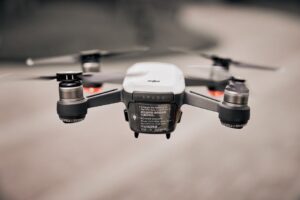The Role of Innovation in Rural Healthcare

In recent years, a wave of urbanization has taken place. More people are leaving their homes in rural towns and moving to US cities. The health and wellbeing of rural communities is declining due to a lack of access to healthcare services. The fact that critical access hospitals are closing their doors at a startling rate adds to the problem!
In a recent report by the Rural Health Association, researchers found that out of the 1,300 critical access facilities open today, 700 are in danger of closure. In another study reported in Becker’s Hospital Review, they found that over half of the pregnant women in rural areas live over 30 minutes away from a hospital offering OB-GYN services.
Rural health systems have taken note of these issues and are working towards implementing telehealth and the latest innovations to stem this worrying trend. They are not the only ones. Startups and established companies are working with healthcare facilities to implement innovative solutions.

Sanford is a health system that serves a large rural community; numbering 2 million spread over 300,000 miles in the Dakotas. They have integrated a single EHR equipped with decision support tools in 45 hospitals and more than 300 clinics. They have also successfully implemented telehealth and transparent data.
Telehealth
Among the most difficult challenges for rural healthcare is providing patients with access to specialists. The Sanford Health System has physicians that provide outreach to remote communities. They enable patients to receive the medical expertise close to home while offering doctors in rural locations access to specialist consultation via video conference.
Telehealth has great potential. However, research shows that broadband is not as available in rural locations, as it is in areas close to the big city. Studies covering seven states found rural populations without residential broadband were in the 63rd percentile! However, among urban areas in the same seven states, researchers found those without residential broadband were only 1% to 9%!
Transparent Data
Ensuring transparency of quality data promotes best practices and ensures patients receive the best care, whether they live in Sioux Falls, South Dakota (population 175,000) or Canby, Minnesota (population 1,700). Any clinic or hospital that is part of Sanford can see the quality of data reporting and measuring. The transparent quality of the data drives providers across the healthcare network to aim for the highest standards.

Innovations of the future in Rural Healthcare
Drones are rapidly becoming an indispensable tool for hospitals and health systems. Their efficiency already trumps land vehicles. These devices allow providers to send lab samples and blood tests between hospital buildings more rapidly and with fewer mishaps. In one recent demonstration, drones successfully transported medical supplies from an onshore medical relief site in Camp May, NY to a facility on a vessel located off the New Jersey coast.
Last summer, the same manufacturer, as part of the Let’s Fly Wisely event, worked with the Remote Area Medical Clinic and an aviation partnership of NASA and Virginia Tech (MAAP) to deliver medical packages to volunteers on the ground. The volunteers delivered the medical supplies to underserviced members of a rural community. The demonstration was a landmark for the use of the drone- it was the first time devices of this type transported medical supplies or pharmaceuticals in the US!
In this rural community, many needing blood pressure medicine and other supplies are not able to get out because of icy conditions. For rural hospitals or health systems across the country, the drone is fast becoming an important part of their medical services.
A model of sustainable Healthcare where everyone wins
Chloe Alpert is the brains behind the startup Medinas Health, an innovative marketplace where critical access and rural hospitals can buy resources at affordable prices. Before we look at how the startup works, let us first find out the story of its beginnings.
So what was the drive behind Medinas Health? Like the beginnings of every great idea, the first step is research. Chloe Alpert’s studies uncovered some alarming results. Her studies showed that between the years 2010-2016, 79 rural facilities closed their doors, with hundreds likely to follow. Alpert also discovered that according to the National Academy of Medicine, the US wastes $765 billion in medical supplies every year! Alpert thought, surely these valuable supplies will benefit rural hospitals- and so Medinas heath was born!
Let us look at how Medinas Health works:
Medinas Health comes tooled with algorithms that evaluate historical data showing the age and usability of medical supplies and equipment; it also works out its optimum worth. Since its launch in 2017, the startup has sold 100 items (including infusion pumps and an MRI machine).

For many, their rural community’s hospitals and needed medical services are miles away. When winter hits, snow covers the ground making it hazardous to travel vast distances for treatment. In addition to the fact that an increasing amount of rural facilities are closing their doors; many others cannot keep up with their operating costs. Imagine this situation; a patient living in a rural area makes the 30 mile drive to their local critical access hospital. At the end of a tiring journey, they find the facilities doors are closed!
The good news is that there are available solutions. Health systems, such as Sanford, have outreach programs that provide medical expertise and technology to rural communities in need. Startups such as Medinas Health ensure medical supplies and equipment are not wasted and put to good use by rural facilities.
Drones present the future of rural care and have great potential to bring needed supplies closer to home for those living in the countryside.
By: Jonathan Gordon
